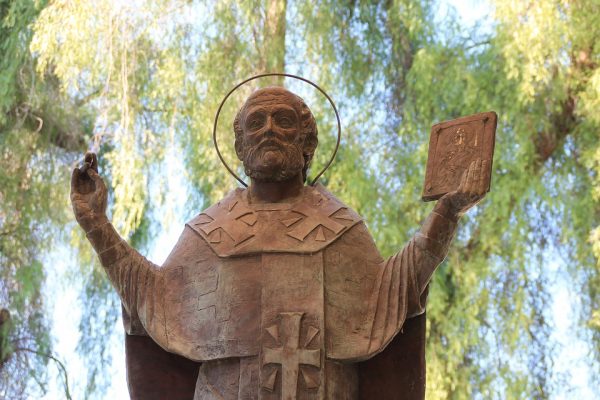New Research May Prove Santa Was Inspiration For Fabled Third-Century Saint
December 6, 2017 by Admin
Filed under Parish Life
After close to a decade of research, historians from the University of America announced Wednesday that the fabled third-century saint, known to many as St. Nicholas, was actually a “sort of devolution” on the present day character of Santa Clause.
“What we believe is that the Santa Clause we all know and believe in today actually inspired legends that would be told during Advent about a saint who supposedly lived around 1,700 years ago,” University of America historian Carmen Banks told the press early this morning. “This was an unusual case, obviously, since most fables evolve over years or decades—even centuries after an event, whereas this one actually began with people looking into what decedents far in the future would think of a tough, orthodox saint they invented.”
“One of the most fascinating things I personally learned was that Nicholas, as they would come to call him, was first written to be an average, run-of-the-mill saint,” research head Douglas Fitzgerald said. “But the songs and stories never really caught on, so that’s when the idea first came up about rewriting the character as someone who was not only holy and extremely zealous, but who was also a bit rowdy and who assaulted people who had heretical opinions. But what ended up happening was that they began to fear what people would say of him in a terrifying dystopia where nearly everyone was sensitive and butt-hurt about everything.”
That’s when, Fitzgerald continued, they began to concoct a “softer side” of the fabled St. Nicholas.
“That’s when they began to Photoshop, for the lack of a better word, their legend. Story tellers were given free rein to add things about the character of St. Nicholas as centuries past, such as the constant smile and jolly laugh and so on, but with one exception—that everything about the original written character, his holiness, his staunch orthodoxy and so on would be omitted, leaving only a caricature of man that everyone, whether Christian or heretic, would love.”




